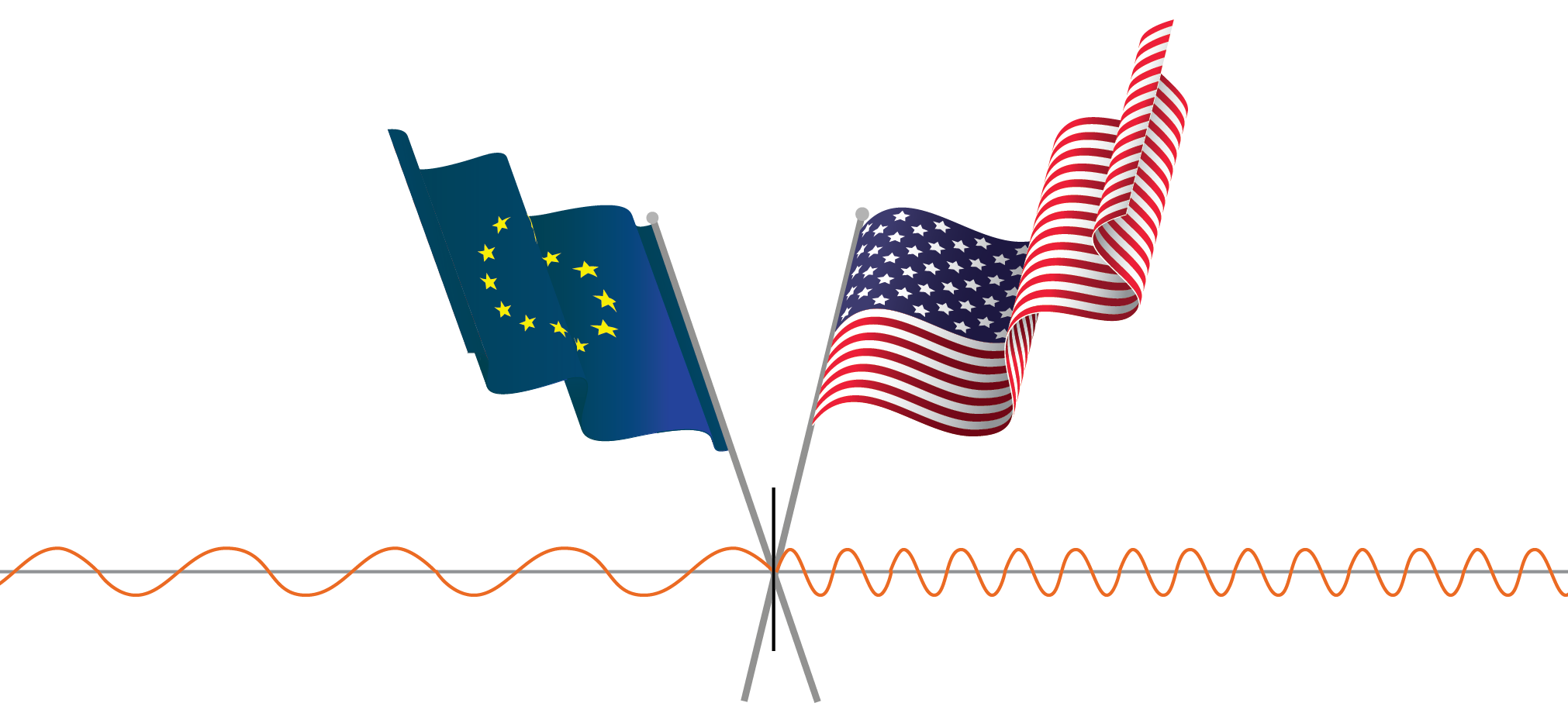EMC standards are different around the world. There are a plethora of different regulatory agencies and standards bodies involved with EMC standards. Hence, it is not always straightforward to determine which EMC standards are relevant for a given product in a given market. In most cases, EMC standards vary based on the geographical region, market, and each of these regions or markets may have different regulations based on the industry or application the product is intended for. For example, the United States and the European Union have different EMC standards as they are two different regions, and both bodies also separate the EMC standards based on the intended application and type of device. Knowing exactly what EMC standards apply to a given product in a given region/market can involve more than a few factors. There may also be exceptions for certain device types in certain regions, which may not be clear to anyone who isn’t explicitly familiar with that type of device in that region. There are a few ways to track down the necessary certifications, any of which may not reveal the entire story. An EMC test lab that operates in a desired market and advertises testing for the type of device one intends to certify can be a promising path. However, these labs expertise is in the testing and the technical professionals at these labs may not have a complete understanding of the regulatory scene. Another option is to inquire at a regulator or certification body for that region. In some cases this may take some hunting to discover which body regulates the specific type of device that is intended for market. It may be useful to track down a sample of the types of electrical or electronic products that are already on the market and that may be similar to the device under question. If legally sold, these products should give some indication of what certifications they comply with on datasheets or other product information.
The wide world of global EMC standards and testing
 The following lists of EMC standards by country/region and by industry are by no means exhaustive. There are often separate standards for different industries, industrial applications, space, and many other nuances not depicted here. In the case of automobiles, there are often different EMC standards for a consumer automobile, industrial, commercial, military, government, etc. European Union standards and variants are used in many parts of the world, but how these standards are implemented may be different based on region. In many regions UnitedStates military/defense and aerospace/space standards are also used in some form or variation.
The following lists of EMC standards by country/region and by industry are by no means exhaustive. There are often separate standards for different industries, industrial applications, space, and many other nuances not depicted here. In the case of automobiles, there are often different EMC standards for a consumer automobile, industrial, commercial, military, government, etc. European Union standards and variants are used in many parts of the world, but how these standards are implemented may be different based on region. In many regions UnitedStates military/defense and aerospace/space standards are also used in some form or variation.
EMC Standards by country/region
- United States: FCC Title 47,Part 15 with the FCC mark
- Canada: Industry Canada ICES
- Europe: EMC directive, IEC 61000 standards, and CISPR 32 standards for CE certification
- Australia/New Zealand: RCM for Australia and New Zealand adopts some of the IEC standards
- Japan: VCCI with the VCCI mark
- China: CNCA with the CCC compliance market for EMC standards
- India: BIS
- Germany: VDE
EMC standards by industry
- Consumer Electronics:
- United States: FCC Title 47, Part 15, Class B, FCC Title 47, Part 18, FCC Title 47, Part 2
- Europe: EN 61000-6-3/1
- Commercial
- United States: FCC Title 47, Part 15, Class B
- Europe: Europe: EN 61000-6-3/1
- Industrial Electronics
- United States: FCC Title 47, Part 15, Class A
- Europe: EN 61000-6-4/2
- Medical:
- United States: same as Europe
- Europe: IEC 60601-1-2 are commonly used around the world
- SAE/Automotive
- United states: SAE and ISO7637
- Europe: IEC CISPR-25
- Automotive Directive (Europe): ISO 1145-1/2
- Military:
- United States: MIL-STD-461, MIL-STD-704, MIL-STD-1275, MIL-STD-1399, DEF STAN 59/411
- NATO: DEF STAN 59/411
- Avionics/Aerospace/Space
- United States: MIL-STD-461, RTCA/DO-160
- Switchgear & Control
- Europe: EN/IEC 60947-1
- Power Station & Substation
- Europe: IEC TS 61000-6-5
- Process Control & Measurement
- Europe: EN/IEC 61326-1
In general, the EMC standards are broken down into basic, generic/industry, product family, product, international, and device specific. Basic standards generally discuss terminology, EM emissions, and requirements for immunity along with basic measuring methods. Generic standards are EMC standards for a given application or use in a specific environment. Product family standards apply to a group of products that meet certain “family” criteria, which varies by region and standards body. Product standards focus on specific product types and are generally very detailed in regards to the EMC testing methods and tolerances.
There are also several countries/regions that have Mutual Recognition Agreements or Arrangements (MRAs) that set a framework to facilitate market access for signatory members. MRAs can allow for the mutual recognition of certification and/or product testing. These MRAs don't necessarily indicate a harmonization of standards. The US and EU have MRAs but are still unharmonized in all aspects of EMC standards.
Topic overview

